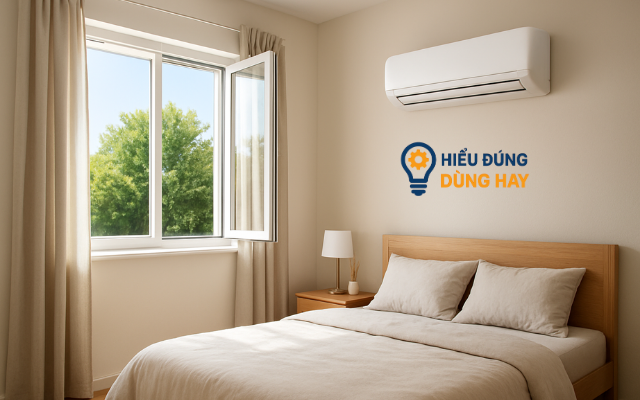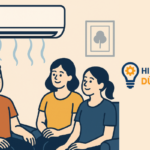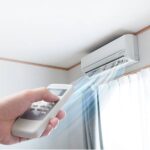
A common habit among many households today when turning on the air conditioner is to keep all doors and windows closed, believing that this will “keep the cold air in” and “save energy.”
The core function of air conditioning is to “transfer” indoor heat outdoors through a cooling compression process. However, if doors and windows are left open, hot outside air will rush in, disrupting the cooled indoor temperature. As a result, the air conditioner will have to work harder, leading to increased energy bills and reduced cooling efficiency. Statistics show that with open doors and windows, energy consumption can be up to 30% higher compared to a closed environment.
In reality, this practice not only makes the room stuffy but also has several negative impacts on health, not to mention the long-term ineffectiveness of the air conditioner.
According to Sohu, scientific research data indicates that if the air in an air-conditioned room is not ventilated for 3 hours, it becomes “stale,” and after 6 hours, the pollution level can reach harmful levels. This is because the air conditioner circulates the indoor air, leading to a build-up of carbon dioxide, formaldehyde, and bacteria from breathing, furniture, and the AC filter itself. As a result, the indoor air quality deteriorates, potentially causing headaches, drowsiness, and respiratory issues, with possible long-term impacts on cardiovascular health.
To optimize the efficiency of air conditioning while maintaining a healthy environment, consider adopting these simple habits:
Open doors and windows for a few minutes before turning on the AC: Before starting your air conditioner, open the windows or main door for 5-10 minutes to “push” out the stale air and allow fresh air to circulate.
Leave a small gap when the room is cool: Once the desired temperature is reached, you can close the door but leave a gap of 3-5 cm. This slight opening will allow just enough outside air to enter, reducing stuffiness while retaining the cool temperature.
Ventilate periodically every 2-3 hours: Even with a small gap, the air still needs to be refreshed. Open the windows or use a fan to blow outside air into the room for about 10 minutes every 3 hours of air conditioning to ensure the indoor air remains healthy and prevent the buildup of bacteria and CO₂, which can cause fatigue and breathlessness.
Understanding how air conditioning works can help you save on energy costs and protect your family’s health. By ventilating before turning on the AC, leaving a slight opening when the room is cool, and periodically ventilating—you can make a significant difference in both energy savings and indoor air quality.
The Evolution of ESCO: From a Promising Model to an Ambiguous Concept in Vietnam
The Energy Service Company (ESCO) model was once touted as a pivotal driver for energy conservation in Vietnam. However, over a decade into its implementation, the industry is still charting its course for effective development.
The Ultimate Guide to Winter Air Conditioning: Should You Buy?
In today’s ever-changing climate, a flexible air conditioning system is a must-have for many households.










































